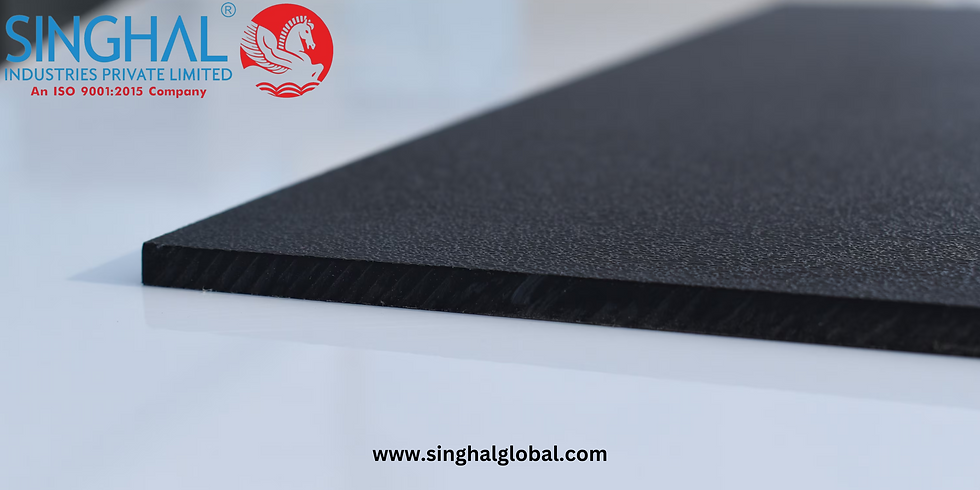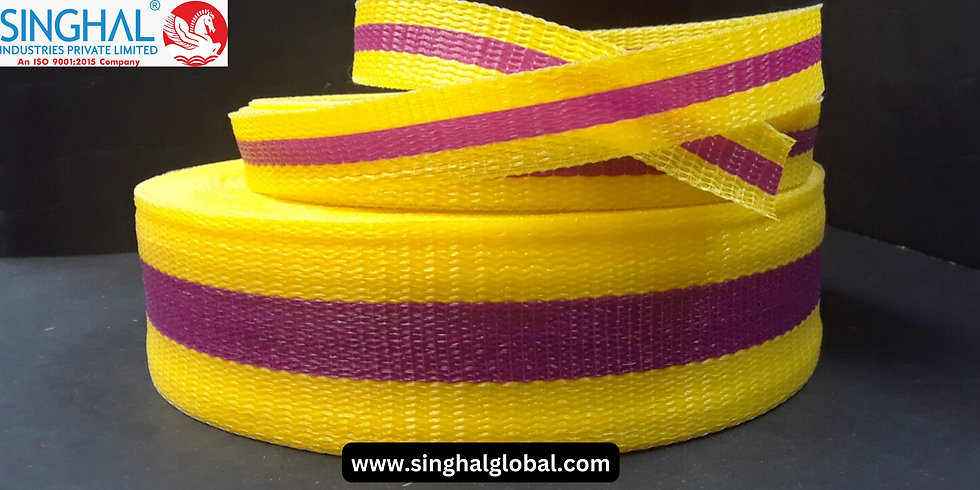A Comprehensive Guide to Growing Vegetables and Herbs in Grow Bags
- Digital Mkt
- Aug 14, 2024
- 5 min read
Growing vegetables and herbs in grow bags is an innovative and practical approach to gardening that offers numerous benefits, including space efficiency, flexibility, and ease of maintenance. Whether you have a small urban garden, a balcony, or a larger garden space, grow bags can be an excellent solution for growing your favorite plants. This comprehensive guide will walk you through the essentials of using grow bags, from selecting the right type to planting and care. We’ll also highlight notable grow bag manufacturers, including Singhal Industries, and answer frequently asked questions.

What Are Grow Bags?
Grow bags are flexible containers designed for growing plants. Made from various materials such as fabric, plastic, or biodegradable substances, these bags provide a controlled environment for root development. They are particularly popular for container gardening due to their versatility and effectiveness.
Benefits of Grow Bags:
Enhanced Root Health: The breathable nature of most grow bags allows for better aeration and prevents root circling, promoting healthier root systems.
Space Efficiency: Grow bags can be placed anywhere, making them ideal for urban settings or limited space gardens.
Temperature Regulation: They offer better temperature control for roots compared to traditional containers.
Mobility: Grow bags are lightweight and can be moved easily to optimize light and growing conditions.
Choosing the Right Grow Bag
1. Material:
Fabric Grow Bags: Made from breathable fabric, these bags are popular for their durability and air pruning capabilities. They are excellent for root health and prevent overheating.
Plastic Grow Bags: Usually less expensive, plastic bags are less breathable but can be lined with materials to improve aeration. They are often used for short-term growing.
Biodegradable Grow Bags: Made from natural fibers or compostable materials, these bags break down over time, enriching the soil. They are environmentally friendly but may have a shorter lifespan.
2. Size:
Small Bags: Ideal for herbs and small plants. Sizes typically range from 1 to 5 gallons.
Medium Bags: Suitable for medium-sized vegetables like lettuce or radishes. Sizes range from 5 to 10 gallons.
Large Bags: Best for larger plants such as tomatoes or peppers. Sizes can be 10 gallons and above.
3. Features:
Handles: Many grow bags come with handles for easy movement and transportation.
Drainage: Look for bags with adequate drainage to prevent waterlogging and root rot.
How to Use Grow Bags
1. Preparation:
Choose a Location: Select a spot that receives appropriate sunlight for your plants. Grow bags can be used on patios, balconies, or even indoors.
Fill the Bags: Use a high-quality potting mix suitable for the type of plants you are growing. Ensure the mix provides good drainage and aeration.
2. Planting:
Select Your Plants: Choose vegetables and herbs based on your climate and growing season. Popular choices include tomatoes, peppers, basil, and lettuce.
Planting Depth: Follow the recommended planting depth for each type of plant. Ensure seeds or seedlings are planted at the correct depth to promote healthy growth.
3. Watering and Feeding:
Watering: Grow bags may require more frequent watering than traditional garden beds due to their smaller soil volume. Check moisture levels regularly and water as needed.
Feeding: Use organic fertilizers or compost to provide essential nutrients. Follow feeding guidelines specific to each type of plant.
4. Maintenance:
Pruning: Regularly prune your plants to encourage healthy growth and prevent overcrowding.
Pest Control: Monitor for pests and diseases. Use organic or non-toxic methods for control to keep your garden healthy.
Notable Grow Bag Manufacturers
1. Grow Bag Manufacturers in Bangalore:
Local Expertise: Bangalore, a hub for gardening enthusiasts, hosts several reputable grow bag manufacturers. These Grow Bag Manufacturers in Bangalore offer a range of grow bags suitable for various gardening needs, from small herbs to large vegetables.
2. Grow Bag Manufacturers in Kerala:
Regional Specialization: Kerala's humid climate presents unique challenges and opportunities for gardening. Grow Bag Manufacturers in kerala in this region provide specialized grow bags that cater to local conditions and plant varieties.
3. Grow Bag Manufacturers in Pollachi:
Quality Products: Pollachi is known for its agricultural products, including grow bags. Manufacturers here produce durable and high-quality grow bags, often tailored to the needs of local gardeners.
4. Singhal Industries:
Reputation: Singhal Industries is a prominent manufacturer of grow bags, offering a diverse range of options, including fabric and biodegradable bags. Known for their quality and innovation, Singhal Industries provides grow bags that cater to both amateur and professional gardeners.
Conclusion
Growing vegetables and herbs in grow bags is a practical and flexible solution for gardeners of all levels. By choosing the right type of grow bag, preparing your plants properly, and providing adequate care, you can enjoy a successful and productive garden. With the variety of materials and sizes available, along with reputable Grow Bag Manufacturers In Pollachi like Singhal Industries, you can find the perfect grow bags to meet your needs. Whether you’re gardening in a small urban space or a larger outdoor area, grow bags offer an effective way to cultivate healthy and vibrant plants.
Frequently Asked Questions (FAQ)
1. What materials are used in grow bags?
Grow bags are typically made from fabric, plastic, or biodegradable materials. Fabric grow bags are known for their breathability and durability, while plastic bags are less expensive but less breathable. Biodegradable bags are environmentally friendly and break down over time.
2. How do I choose the right size of grow bag?
The size of the grow bag depends on the type of plant you are growing. Small bags are suitable for herbs, medium bags for smaller vegetables, and large bags for larger plants like tomatoes. Ensure the bag size accommodates the root system of the plant.
3. How often should I water plants in grow bags?
Plants in grow bags may require more frequent watering than those in traditional garden beds due to the limited soil volume. Check the moisture level regularly and water when the top inch of soil feels dry. The frequency may vary depending on the plant type, climate, and bag size.
4. Can I use grow bags indoors?
Yes, grow bags can be used indoors as long as they are placed in a location with sufficient light. Consider using grow lights if natural light is limited. Ensure the grow bags have adequate drainage and ventilation to prevent moisture buildup.
5. How do I maintain the health of plants in grow bags?
Regular maintenance includes monitoring watering needs, providing appropriate nutrients, and checking for pests or diseases. Pruning plants can help prevent overcrowding and promote healthy growth. Use organic fertilizers or compost for feeding.
6. Where can I buy high-quality grow bags?
High-quality grow bags can be purchased from various manufacturers and suppliers. Notable options include grow bag manufacturers in Bangalore, Kerala, and Pollachi, as well as established companies like Singhal Industries. These suppliers offer a range of products to suit different gardening needs.



Comments